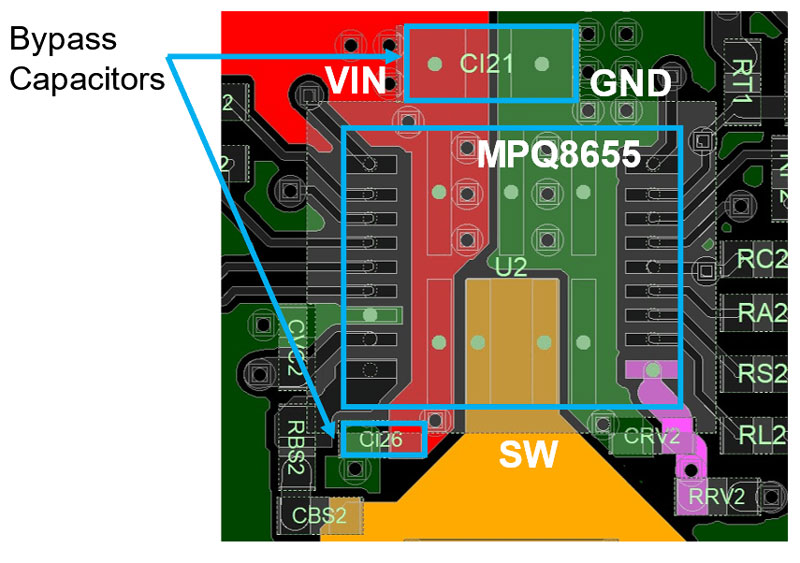
Optimizing capacitance in the 5G Power Delivery Network (PDN) is critical to ensuring stable and efficient power supply to 5G equipment and infrastructure. Here are some strategies for optimizing PDN capacitors for 5G: Analyze power distribution: Start by analyzing the power distribution requirements for a specific 5G system. Consider factors such as the number of devices, power requirements, and distance between devices. This analysis will help you determine the appropriate capacitance required in the PDN. Place decoupling capacitors: Decoupling capacitors are used to provide local energy storage near power-hungry components. Place them strategically so that they are close to devices that require power. This will help reduce voltage drops and noise in the PDN, thereby improving overall system performance. Optimize capacitor selection: Choosing the correct capacitor type and value is critical for PDN optimization. Look for capacitors with low equivalent series resistance (ESR) and equivalent series inductance (ESL) to minimize power loss. Also, consider using ceramic capacitors with high capacitance values for higher frequency response. Manage parasitics: Parasitic inductance and resistance can degrade capacitor performance. To mitigate these effects, use shorter and wider traces for power distribution, minimize loop area, and make efficient use of vias. This will help reduce the impact of parasitic components on the overall PDN capacitance. Perform a transient analysis: Performing a transient analysis will allow you to simulate the behavior of the PDN under different load conditions. By analyzing the voltage and current waveforms, you can determine whether the capacitance needs to be adjusted to maintain stable power transfer. Consider the power plane: The power plane provides a low-impedance path for current flow and can reduce the need for external capacitors. Use multiple power planes in your PCB design to ensure adequate power distribution, thereby reducing overall reliance on external capacitors. Optimize PCB layout: Proper PCB layout is critical to minimizing power distribution losses. Follow best practices such as using separate power and ground planes, reducing power trace lengths, and placing power planes closer to active components. This will help reduce impedance and voltage drop, thereby improving PDN performance. Keep in mind that optimizing capacitors in 5G PDN requires a thorough understanding of specific system requirements and careful consideration of design factors. Taking into account the unique characteristics of 5G technology, such as higher frequencies and faster data rates, to ensure reliable and efficient power transmission.
Use distributed capacitance: Distributed capacitance refers to placing small capacitors throughout the PCB to provide localized energy storage. Helps reduce voltage drops and noise in PDNs by ensuring that power is readily available near power-hungry components. Strategically place distributed capacitors close to critical components or areas of high power demand. Consider package-level capacitance: Many components, such as integrated circuits and power management modules, now have built-in capacitance in their packages. This internal capacitance reduces reliance on external capacitors and simplifies PDN design. When selecting components, consider those that provide package-level capacitance suitable for your power delivery needs. Use appropriate bypass techniques: Bypass techniques, such as utilizing bypass capacitors and power plane decoupling, can help minimize noise and voltage fluctuations in the PDN. Place bypass capacitors in parallel with the power and ground pins of active components to provide a low-impedance path for high-frequency noise. In addition, use power plane decoupling to connect the power plane and ground plane through multiple vias to further improve the decoupling effect. Implement frequency-dependent capacitance: Since 5G technology operates at higher frequencies, it is important to consider the frequency-dependent behavior of capacitors. Choose capacitors with stable capacitance over a wide frequency range to ensure consistent performance. This can be achieved by using different types of capacitors (such as ceramic capacitors) and appropriate dielectric materials. Perform simulation and testing: Once the PDN design is complete, it is critical to perform simulation and testing to verify its performance. Specialized software tools are used to simulate the behavior of the PDN under different conditions, ensuring that voltage and current levels remain within acceptable limits. Physical testing can also be performed to verify the validity of the design. By implementing these strategies, you can optimize the capacitance in the 5G PDN to ensure stable and efficient power distribution. Remember to also consider other aspects of the PDN design, such as inductance and resistance, to further enhance the overall performance of the power delivery network.
